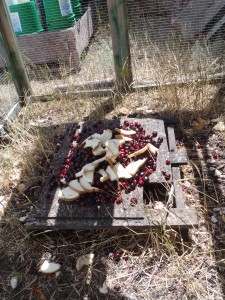European starling (Sturunus vulgaris) is an agricultural pest, especially in fruits such as cherries, berries, and grapes. Annually, over $4 million worth crop is damaged in vineyards in the Okanagan valley. Its population increases every fall due to migration. Therefore, the understanding of natal origin of the migratory pest like starling is important to develop successful pest management.
Research includes
- Develop the chemical signature library of juvenile and adult birds from in and outside of the Okanagan -Similkameen valley.
- Better understand the movement and population dynamics of starlings locally.
Applications
- Identification of the origin of migrant starlings will help the Starling Control Program to make an informed decision about how and where to concentrate control efforts to reduce crop damage by the birds.
- It will reduce the use of crop netting and this will reduce the number of songbirds trapped in the netting.
- It also has potential to reduce the use of propane cannons and other bird scaring devices used by the local farmers, which will revive the population of native song birds.
- Development of this technique is also important because it may be applied to address other problems in wildlife research. For example, it can be used to protect organisms in natal grounds that are economically and ecologically important.
- This research technique can also be applied to control other migratory pest species elsewhere in Canada. Nonetheless, the result of my research could be more valuable to the agricultural groups and local government to initiate new approaches to control pests in large geographic regions.
Supervised By |
|
Supervisor: Dr. Jeff Curtis Office: SCI 315 Department of Earth and Environmental Sciences, The University of British Columbia, Okanagan, 3333 University Way, Kelowna, BC V1V 1V7 |
Research Funded By |
|
|
British Columbia Grapegrowers’ Association |



